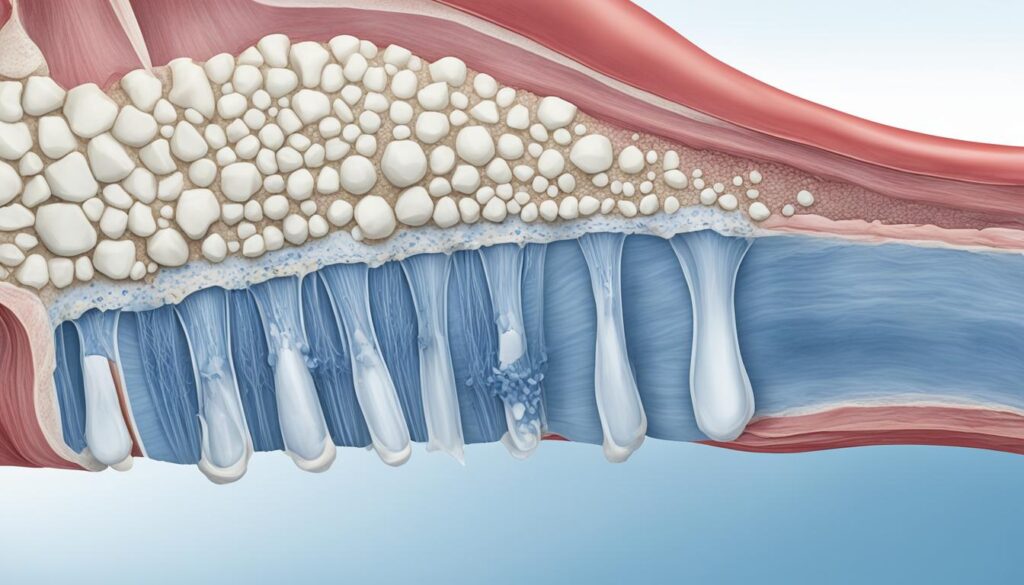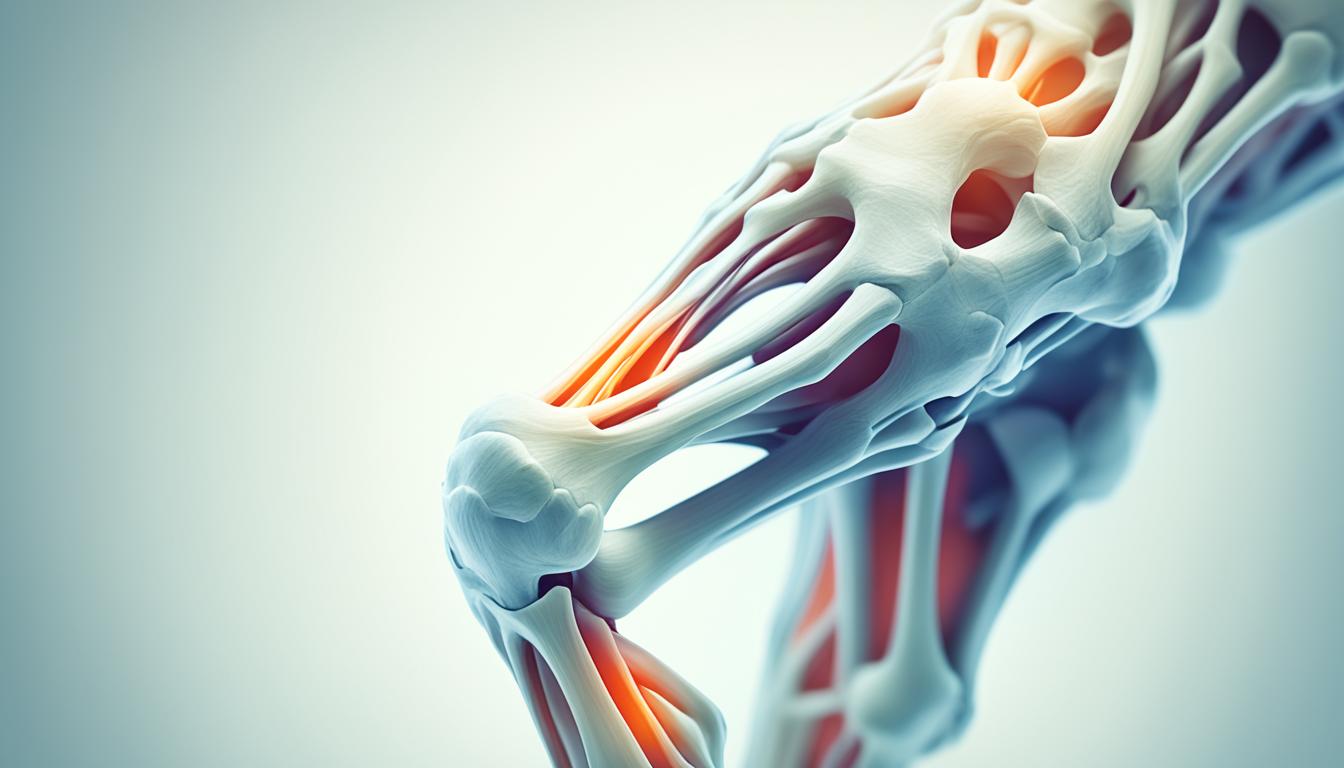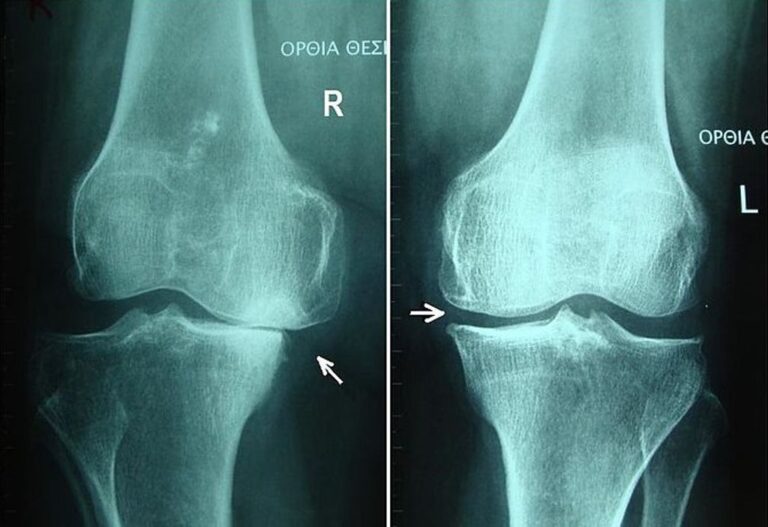Knee Osteoarthritis: Who Does it Affect?
Welcome to our comprehensive guide on knee osteoarthritis and its impact on the affected population. Knee osteoarthritis is a prevalent condition that affects millions of people, particularly as they age. It is crucial to understand the risk factors, demographics, and prevalence of this condition to better identify and support those at risk.
Throughout this article, we will explore the various aspects of knee osteoarthritis, including its symptoms, causes, and management strategies. By shedding light on this condition, we aim to provide valuable information and resources for individuals looking to understand and cope with knee osteoarthritis.
To start, let us delve into the demographics and risk factors associated with knee osteoarthritis. It is important to note that while knee osteoarthritis can affect anyone, certain factors increase the likelihood of developing this condition. These factors include older age, being female, obesity, joint injuries, repetitive stress on the joint, genetics, and certain metabolic diseases.
By examining these risk factors and understanding the affected population, we can better address the needs of those living with knee osteoarthritis. In the upcoming sections, we will explore the symptoms, causes, treatment options, coping strategies, and more, providing a comprehensive overview of knee osteoarthritis and its management.
Stay tuned as we delve deeper into the world of knee osteoarthritis and equip you with the knowledge and resources needed to navigate this condition.
Symptoms of Knee Osteoarthritis
The symptoms of knee osteoarthritis are characterized by pain, stiffness, tenderness, loss of flexibility, a grating sensation, bone spurs, and swelling. These symptoms often develop gradually and worsen over time.
One of the most common symptoms of knee osteoarthritis is pain in the affected joints, especially during or after movement. This pain can range from mild discomfort to severe and debilitating. Individuals with knee osteoarthritis may also experience stiffness in the knee joint, which is most noticeable upon awakening or after being inactive for a period of time.
Tenderness is another common symptom of knee osteoarthritis. The affected joint may be tender to the touch, and pressure applied to the joint can cause pain and discomfort.
Loss of flexibility and range of motion is also a characteristic symptom of knee osteoarthritis. The affected knee may become less flexible and may not be able to move as freely as before. This can make daily activities such as walking, climbing stairs, or bending difficult and painful.
In addition, individuals with knee osteoarthritis may experience a grating sensation and hear popping or crackling sounds when using the joint. This is caused by the roughened surfaces of the damaged joint rubbing against each other.
The formation of bone spurs around the joint is another symptom of knee osteoarthritis. These bone spurs, also known as osteophytes, develop as a result of the body’s attempt to repair and stabilize the damaged joint.
Finally, swelling caused by soft tissue inflammation is a common symptom of knee osteoarthritis. The affected knee may appear swollen and feel warm to the touch.
It’s important to note that the severity and combination of symptoms can vary greatly from person to person. Some individuals may experience mild symptoms, while others may experience more severe symptoms that significantly impact their daily lives.
“The symptoms of knee osteoarthritis often start slowly and progress over time. By understanding the symptoms, individuals can seek appropriate medical attention and implement management strategies to improve their quality of life.”

| Symptoms | Description |
|---|---|
| Pain | Commonly experienced during or after movement |
| Stiffness | Most noticeable upon awakening or after being inactive |
| Tenderness | Pain or discomfort when pressure is applied to the joint |
| Loss of Flexibility | Reduced range of motion and difficulty with daily activities |
| Grating Sensation | Roughened joint surfaces rubbing against each other |
| Bone Spurs | Formation of bony growths around the joint |
| Swelling | Soft tissue inflammation causing joint swelling |
Causes of Knee Osteoarthritis
Knee osteoarthritis is a condition that develops gradually and can significantly impact a person’s quality of life. It occurs when the protective cartilage in the knee joint deteriorates, leading to bone-on-bone contact and subsequent joint damage. While the exact cause of cartilage deterioration is still not fully understood, it is believed to be a combination of genetic factors and mechanical stress on the joint.
In knee osteoarthritis, wear and tear play a significant role in the breakdown of cartilage. Over time, the continuous stress and strain on the joint cause the cartilage to wear away, resulting in decreased cushioning and protection. This wear and tear can be caused by various factors, including repetitive activities, improper joint alignment, and injury.

Furthermore, joint inflammation also contributes to the development of knee osteoarthritis. Inflammation occurs as a result of the joint’s natural response to injury or ongoing stress, causing swelling, stiffness, and pain. Chronic inflammation can accelerate the breakdown of cartilage and exacerbate the progression of knee osteoarthritis.
While certain risk factors such as age, gender, obesity, and previous joint injuries increase the likelihood of developing knee osteoarthritis, it is essential to note that the condition can affect anyone, regardless of these factors. Taking preventive measures and adopting a healthy lifestyle can help minimize the risk of developing knee osteoarthritis and maintain joint health.
Risk Factors for Knee Osteoarthritis
Several factors increase the risk of developing knee osteoarthritis. Understanding these risk factors can help us identify individuals who may be more susceptible to this condition.
- Age: The risk of knee osteoarthritis increases with each decade of life. Older individuals are more likely to develop this condition compared to younger individuals.
- Gender: Women are more likely to develop knee osteoarthritis than men. Hormonal and anatomical differences between genders may contribute to this higher risk.
- Obesity: Excess weight puts additional stress on the joints, increasing the likelihood of developing knee osteoarthritis. Maintaining a healthy weight can help reduce this risk.
- Joint injuries: Sports-related injuries, accidents, and other traumatic events that affect the knee joint can lead to the development of knee osteoarthritis later in life.
- Repetitive stress: Certain occupations or activities that involve repetitive stress on the knee joint can contribute to the development of knee osteoarthritis. Examples include jobs that require frequent kneeling or squatting.
- Genetics: Some people may have a genetic predisposition to develop osteoarthritis. Family history of the condition can increase the risk.
- Metabolic diseases: Certain metabolic diseases, such as diabetes and hemochromatosis, are associated with an increased risk of knee osteoarthritis.
Understanding these risk factors can help us take proactive measures to reduce the chances of developing knee osteoarthritis. It’s important to note that having one or more of these risk factors does not guarantee the development of the condition, but it increases the likelihood.
Management and Treatment Options for Knee Osteoarthritis
While there is no cure for knee osteoarthritis, there are various treatment options available to manage its symptoms and slow its progression. These options focus on pain relief, improving mobility, and enhancing the overall quality of life for individuals with knee osteoarthritis.
Exercise
Exercise plays a crucial role in the management of knee osteoarthritis. It can strengthen the muscles around the knee, improve range of motion, and reduce pain. Low-impact exercises like swimming, cycling, and walking are highly recommended. Physical therapists can provide personalized exercise programs and guidance.
Weight Management
Maintaining a healthy weight is essential for individuals with knee osteoarthritis. Excess weight puts increased stress on the joints, leading to more pain and further deterioration. Incorporating a balanced diet and regular exercise to achieve and maintain a healthy weight can significantly reduce the burden on the knees.
Pain Relief Measures
Various pain relief measures can help alleviate the discomfort caused by knee osteoarthritis. Over-the-counter painkillers like acetaminophen or non-steroidal anti-inflammatory drugs (NSAIDs) can provide temporary relief. In some cases, corticosteroid injections may be recommended to reduce inflammation and pain in the affected joint.
Surgical Options
For severe cases of knee osteoarthritis that do not respond to conservative treatments, surgical options may be considered. Knee replacement surgery, also known as arthroplasty, involves removing the damaged parts of the knee joint and replacing them with artificial components. This procedure can provide long-term pain relief and improve joint function, enabling individuals to resume an active lifestyle.
It is important to consult with a healthcare professional to determine the most suitable treatment options based on the individual’s specific condition and preferences. Treatment plans are typically tailored to address each person’s unique needs and goals.
Through a combination of exercise, weight management, pain relief measures, and surgical interventions, individuals with knee osteoarthritis can effectively manage their symptoms and enhance their overall well-being. Ongoing research and advancements in treatment options continue to improve the available therapies, offering hope for a better quality of life for those living with knee osteoarthritis.
Coping with Knee Osteoarthritis
Living with knee osteoarthritis can be challenging, but there are coping strategies and support available. It is important to develop self-management techniques to effectively manage the symptoms and improve the quality of life. Here are some strategies:
Pacing Activities
One of the coping strategies for knee osteoarthritis is to pace activities. This involves planning and distributing tasks throughout the day, taking breaks to rest, and avoiding overexertion. By pacing activities, individuals with knee osteoarthritis can reduce joint stress and minimize pain and discomfort.
Use of Assistive Devices
Assistive devices can provide support and alleviate stress on the joints affected by knee osteoarthritis. These devices include canes, crutches, walkers, or braces. By using these devices, individuals can improve mobility, reduce pain, and increase independence in daily activities.
Modifications to Reduce Strain
Making modifications to the home or workplace environment can help reduce strain on the knees. This may involve using ergonomic furniture, installing handrails or grab bars, or creating a more accessible and supportive environment. By reducing strain, individuals can minimize discomfort and promote better joint health.
Psychological Therapies
Maintaining good mental health is essential when coping with knee osteoarthritis. Psychological therapies such as cognitive-behavioral therapy (CBT) can be beneficial in managing the emotional and mental impact of the condition. CBT helps individuals develop coping strategies, improve self-esteem, and reduce stress and anxiety related to knee osteoarthritis.
In addition to these coping strategies, it is essential to seek support from healthcare professionals, family, and friends. They can provide guidance, motivation, and understanding throughout the journey of managing knee osteoarthritis.
| Coping Strategy | Benefits |
|---|---|
| Pacing Activities | – Reduces joint stress – Minimizes pain and discomfort |
| Use of Assistive Devices | – Provides support for joints – Improves mobility and independence |
| Modifications to Reduce Strain | – Reduces strain on knees – Promotes better joint health |
| Psychological Therapies | – Manages emotional and mental impact – Develops coping strategies |
Conclusion
Knee osteoarthritis is a prevalent condition that affects millions of people, especially as they age. Understanding the risk factors and demographics associated with knee osteoarthritis is crucial in identifying those who are more susceptible to the disease. While there is currently no cure for knee osteoarthritis, various management strategies and treatment options exist to help individuals effectively cope with their symptoms and enhance their quality of life.
It is important to note that knee osteoarthritis is a complex condition influenced by multiple factors such as age, gender, obesity, joint injuries, repetitive stress, genetics, and metabolic diseases. By addressing these risk factors and implementing appropriate management techniques, individuals with knee osteoarthritis can experience symptom relief and potentially slow down the progression of the disease.
From exercises that strengthen the knee muscles and improve flexibility to weight management techniques that minimize joint strain, numerous non-pharmacological interventions have proved beneficial. Additionally, over-the-counter pain relievers, non-steroidal anti-inflammatory drugs (NSAIDs), steroid injections, and in severe cases, surgical interventions like knee replacement surgery, offer viable treatment options.
Ongoing research and advancements in the field of knee osteoarthritis continue to explore new understanding of the condition and innovative intervention methods. As we strive to unlock more effective treatments, it is essential for healthcare providers, researchers, and patients to work together to improve the management and outcomes for individuals living with knee osteoarthritis.
FAQ
Who does knee osteoarthritis affect?
Knee osteoarthritis can affect anyone but is most common in older individuals, particularly those over the age of 70. It is more prevalent in women than men. Other risk factors include obesity, joint injuries, repetitive stress on the joint, genetics, and certain metabolic diseases.
What are the symptoms of knee osteoarthritis?
Common symptoms of knee osteoarthritis include pain in the affected joints, especially during or after movement, stiffness that is most noticeable upon awakening or after being inactive, tenderness when pressure is applied to the joint, loss of flexibility and range of motion, a grating sensation and popping or crackling sounds when using the joint, the formation of bone spurs around the joint, and swelling caused by soft tissue inflammation.
What causes knee osteoarthritis?
Knee osteoarthritis occurs when the protective cartilage in the joint gradually deteriorates, leading to bone-on-bone contact. The exact cause of cartilage deterioration is not fully understood but is believed to be a combination of genetic factors and mechanical stress on the joint.
What are the risk factors for knee osteoarthritis?
Risk factors for knee osteoarthritis include older age, being female, obesity, joint injuries, repetitive stress on the joint, genetics, and certain metabolic diseases such as diabetes and hemochromatosis.
How is knee osteoarthritis managed and treated?
Management and treatment options for knee osteoarthritis include exercise to strengthen the muscles around the knee, improve range of motion, and reduce pain; weight management to reduce stress on the joints; pain relief measures such as over-the-counter painkillers, non-steroidal anti-inflammatory drugs (NSAIDs), and steroid injections; and surgical options such as knee replacement surgery.
How can individuals cope with knee osteoarthritis?
Coping with knee osteoarthritis involves self-management techniques such as pacing activities, using assistive devices or supports for the joints, and making modifications to the home or workplace to reduce strain. Psychological therapies like cognitive-behavioral therapy (CBT) and stress-relieving techniques can also be helpful for managing the emotional and mental impact of knee osteoarthritis.







